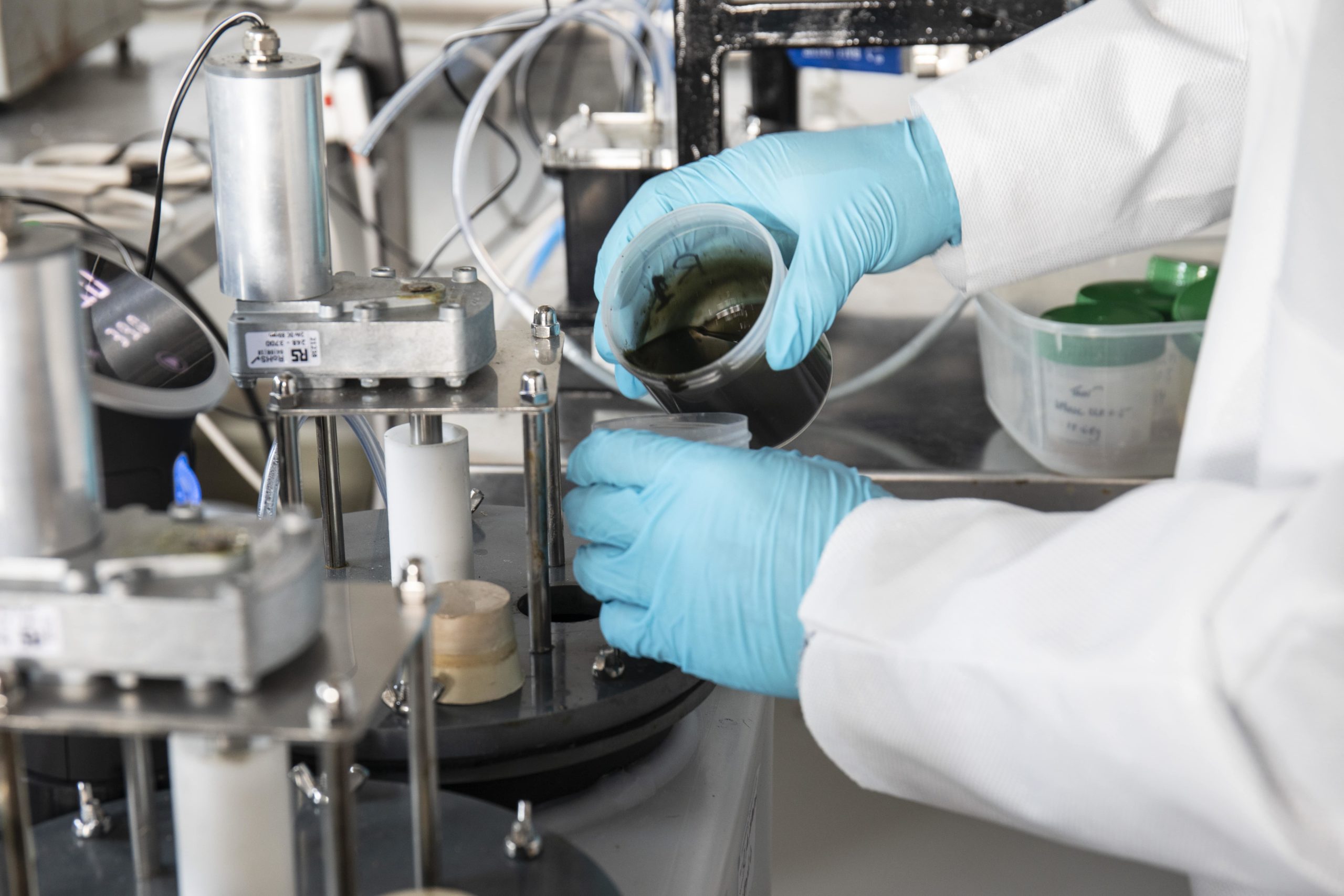
Biofuels Laboratory

- Contact
- Title
-
MaREI Director and Head of the Advanced Fuels in the Circular Economy Group
- Tel
-
+353 (0)21 490 2286
- Web
Description
MaREI’s Advanced Fuels in the Circular Economy Group focus on renewable gaseous biofuel production (biohydrogen and biomethane) from 2nd generation biofuel substrates such as wastes, agricultural residues and lignocellulosic energy crops, and 3rd generation biofuel substrates such as macro-algae (seaweed) and micro-algae.
Research covers biological and thermochemical bioenergy pathways. The group investigates a range of digestion applications at lab scale including for innovative technologies such as Power to Gas, demand driven biogas and novel biogas upgrading technologies.
Fundamental and applied aspects of biomass gasification, pyrolysis, torrefaction, combustion and methanation are also investigated. Work includes for desktop analyses such as chemical kinetic modelling, process simulation, geographic specific bioresources, Life Cycle Analysis, sustainability analyses and techno-economic studies.
The research group’s work facilitates the development of roadmaps, which describe how Ireland can initiate a green gas industry, which would contribute to mandatory renewable energy targets for renewable heat and transport fuel.
Specification
- Pilot scale anaerobic digestion reactors for carrying out biofuel trials
- 200m2 aquaculture tank laboratory and holding area
- Category 2 Laboratory
- Atmospheric chemistry simulation chambers
- Controlled temperature rooms
- X-Ray/Photo laboratories
- Clean rooms
- Tissue culture room
Services
The Biofuels Laboratory focus on investigations of renewable gaseous biofuel production (biohydrogen and biomethane) in the circular bioenergy system. Innovative technologies investigated in the lab include for power to gas, advanced anaerobic digestion technologies, novel biogas upgrading technologies, biomass pyrolysis/ torrefaction, combustion and biomethanation.
List of lab facilities:
- Automatic Methane Potential Test System (AMPTS) Ⅱ: The Biofuels Lab has 3 sets of AMPTS Ⅱ systems, each containing 15 test vials. The system is used for conducting various anaerobic batch fermentation tests. This includes performing biochemical methane potential (BMP) tests, anaerobic biodegradability studies, specific methanogenic activity assays, as well as conducting residual gas potential analyses on digested slurry.
- Continuous Stirred Tank Reactor System (CSTR): The Biofuels Lab has 16 sets of 5L-volume CSTR systems. The system, equipped with temperature and efficient stir controller, is used for conducting continuous anaerobic fermentation of various organic substrates such as food waste, grass, seaweed, and other organic wastes. It is a useful model to gain deeper knowledge for determining the suitability of a potential feedstock for biogas production, defining the suitable organic loading rate or retention time for a given feedstock, designing suitable feeding schedules, and assessing handling or disposal conditions for digested residues.
- Two-stage anaerobic digestion system: This system consists of two 50 L stainless steel continuously stirred tank reactors and a digestate tank. The content of the reactors is heated using electric heating elements that are controlled by the HMI. The temperature can be set by the user via a control panel. Stirrer speed can be adjusted from 0 to 100% of its nominal RPM of 1800. Digestate is removed from the digestate tank and disposed into a drum as per specific waste management procedures. The biogas produced is measured using a wet tip gas meter (tipping bucket). The pilot-scale system is operated continuously to upscale the optimised digestion system.
- Microwave digestion system (CEM, MARS 6): The microwave system is able to heat 40 samples during the same run with the ability to accurately monitor the temperature and pressure of each individual sample. The microwave oven has a maximum power of 3 kW and a magnetic frequency of 2.45 GHz. It can be used for digestion of diverse organic wastes and pre-treatment of biomass.
- Photosynthetic biogas upgrading set-up: In this system, biogas (primarily CH4 and CO2) is bubbled in an absorption (bubble) column connected to a photobioreactor with circulating algal solution to remove CO2 and produce biomethane. Here, CO2 is first absorbed by an alkaline solution with carbonate medium, which can then be utilised for microalgae cultivation as the inorganic carbon for photosynthesis. In this laboratory set-up, research towards optimisation of the photosynthetic biogas upgrading process is being carried out using synthetic biogas (mixture of N2 and CO2) by varying multiple parameters, such as the gas and liquid flow rates, the height of absorption column, concentration of microalgae and temperature among others.
- Spectrophotometer (V-3000PC): The single beam spectrophotometer is an instrument that produces and measures the ratio of a light beam’s intensity as it enters and leaves a cuvette within the range of 320 and 1100 nm. This directly provides data about the amount of light absorbed by a sample held in the cuvette. By knowing the absorbance, parameters like concentration of a substance or its pigments; impurities; characterisation of proteins among multiple others can be quantified.
- Gas chromatography system (Agilent 7890A): This gas chromatography system is the world’s most widely used GC system due to its accurate temperature controls, precise injection systems, and high performance Electronic Pneumatic Control modules for good retention time and area count repeatability. It can be used to analysis the gas composition and soluble chemicals in water solutions.
- Anaerobic workstation (Whitley DG250): This anaerobic workstation can be used when there is a need to easily process, culture and examine anaerobic samples without exposure to atmospheric oxygen. The temperature of this workstation can be altered from 5°C above ambient to up to 45°C. The workstation can also be operated as a microaerobic or hypoxic chamber with the correct gasses connected. It can be used for pure culture or mixed cultures cultivation with strict oxygen requirement.
- Compact tube furnace: The tube furnace with integrated control system can be used for biochar production under protective atmosphere (N2 and CO2) from diverse feedstocks, such as agricultural waste, food waste, algae, forest residue, and anaerobic digestate. Equipped with a working tube made from ceramic, it attains maximum furnace chamber temperature of 1200 °C.
- Muffle furnace: This furnace allows rapid high-temperature heating, recovery, and cooling in self-contained, energy-efficient cabinets. It is ideal for ashing samples, heat-treating applications, and biomass composition analysis.
- Universal titrator: Titration is a widely used technique for quantitative of the concentration of a substance in solution by measuring the volume required by a standard solution to ensure complete reaction with the sample. At present the titration is performed to measure the alkalinity in microalgae culture and anaerobic digestion digestate. This provides information about system performance and stability, essential for optimal operation.
- Spectrophotometer (HACH, DR3900): It is a benchtop visible spectrum (320 – 1100 nm), split beam spectrophotometer with over 220 pre-programmed methods optimized for laboratory sample analysis, such as measurements of Ammonium, COD, Phosphate, Nitrate and many others.
- TITRALAB AT1000 workstation: Pre-programmed titration methods detect end points and eliminate manual calculations to make results easier to achieve without advanced programming. It is used for determination of FOS/TAC value in biogas reactors.
- Biological Hydrogen Methanation system: This state-of-the-art system has been designed and constructed for the experimental upgrading of hydrogen to biomethane. It comprises of three 4L reactors with a ceramic gas diffuser as the basis of mixing and gas dissolution. The system is designed with modularity in mind and allows for a range of reactor operation arrangements; cascading, batch, continuous in series and parallel. Designed for thermophilic (55°C-65°C) temperature conditions but may be run at mesophilic (20°C to 45°C) as well. With a pressure limit of up to 3 bar, the system is fully ATEX rated and housed in walk in fume hood for maximised safety. Future pressure and flowrate can be easily implemented by minor changes if demand from the biological contents should arise.
- Other sharing facilities in the ERI building: the electron microscopes, x-ray photoelectron spectroscopy, temperature-controlled rooms, distilled water supply system, autoclave, centrifuges and so on.







